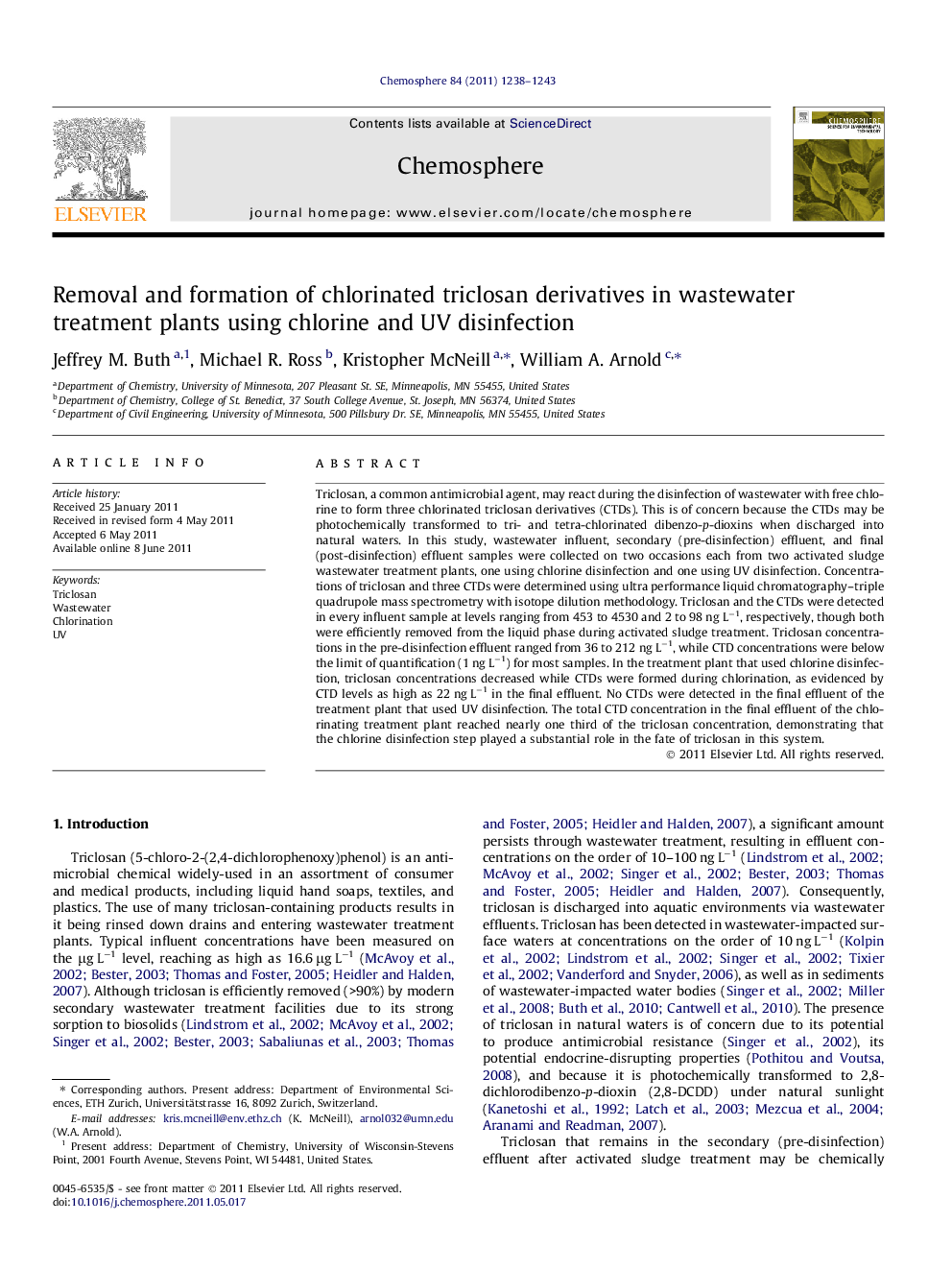| کد مقاله | کد نشریه | سال انتشار | مقاله انگلیسی | نسخه تمام متن |
|---|---|---|---|---|
| 4410823 | 1307565 | 2011 | 6 صفحه PDF | دانلود رایگان |

Triclosan, a common antimicrobial agent, may react during the disinfection of wastewater with free chlorine to form three chlorinated triclosan derivatives (CTDs). This is of concern because the CTDs may be photochemically transformed to tri- and tetra-chlorinated dibenzo-p-dioxins when discharged into natural waters. In this study, wastewater influent, secondary (pre-disinfection) effluent, and final (post-disinfection) effluent samples were collected on two occasions each from two activated sludge wastewater treatment plants, one using chlorine disinfection and one using UV disinfection. Concentrations of triclosan and three CTDs were determined using ultra performance liquid chromatography–triple quadrupole mass spectrometry with isotope dilution methodology. Triclosan and the CTDs were detected in every influent sample at levels ranging from 453 to 4530 and 2 to 98 ng L−1, respectively, though both were efficiently removed from the liquid phase during activated sludge treatment. Triclosan concentrations in the pre-disinfection effluent ranged from 36 to 212 ng L−1, while CTD concentrations were below the limit of quantification (1 ng L−1) for most samples. In the treatment plant that used chlorine disinfection, triclosan concentrations decreased while CTDs were formed during chlorination, as evidenced by CTD levels as high as 22 ng L−1 in the final effluent. No CTDs were detected in the final effluent of the treatment plant that used UV disinfection. The total CTD concentration in the final effluent of the chlorinating treatment plant reached nearly one third of the triclosan concentration, demonstrating that the chlorine disinfection step played a substantial role in the fate of triclosan in this system.
► Chlorinated triclosan derivatives are removed by activated sludge treatment.
► Triclosan concentrations are reduced during chlorination.
► Chlorinated triclosan derivatives are reformed during chlorination of wastewater.
► UV treatment of wastewater does not lead to formation of chlorinated triclosan derivatives.
Journal: Chemosphere - Volume 84, Issue 9, August 2011, Pages 1238–1243